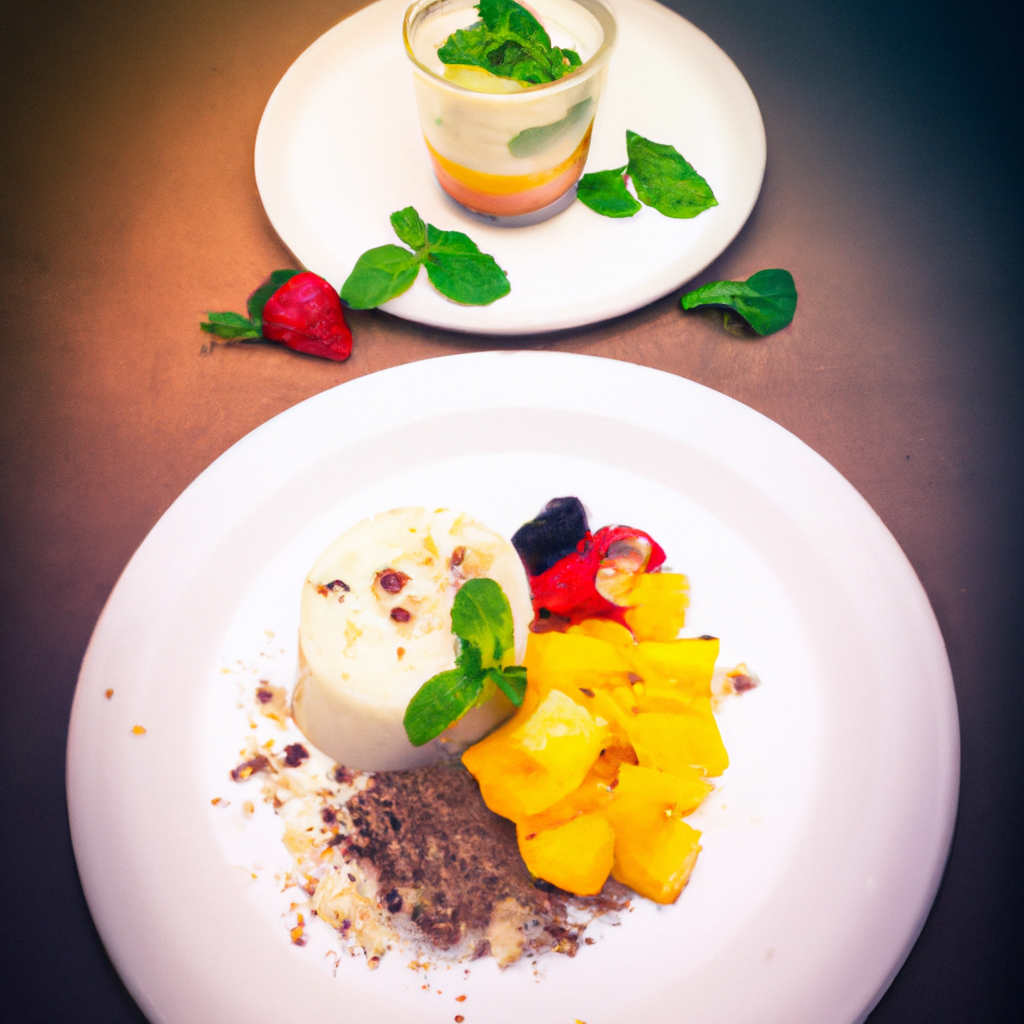Through the lens of a camera, the world of food is given an enchanting makeover with every click, bestowing a feast for the eyes that ignites our appetites. But behind these visually enticing dishes lies a secret partner in crime – photo editing. In the pursuit of perfection, culinary enthusiasts and food photographers alike delve into the realm of manipulating colors and textures, breathing life into their images. In this article, we embark on a mesmerizing journey, exploring the art of editing food photos, illuminating how simple adjustments can unlock a whole new level of vibrancy and attractiveness. Whether you’re an aspiring food blogger, an amateur photographer, or a curious epicurean, join us as we unravel the secrets that tantalize our taste buds visually, one pixel at a time.
1. “From Mundane to Mouthwatering: Transforming Food Photos with Colors that Pop!”
Are your food photos feeling a little lackluster? Do they fail to capture the mouthwatering appeal of the dishes you’ve prepared? Fear not, because we have the solution to transform your mundane food photos into eye-catching masterpieces that will leave your viewers drooling! One of the most effective ways to breathe life into your food photography is by using colors that pop, making your dishes appear more vibrant and enticing than ever before.
To start, consider the color wheel as your secret weapon. Opposing colors on the wheel, also known as complementary colors, can create a visually striking effect when used together. For instance, if you have a plate of golden-brown fried chicken, pairing it with a vibrant purple cabbage slaw will instantly make the dish visually captivating. By incorporating complementary colors, you create a harmonious visual balance that elevates the overall appeal of your food photos.
Another technique to make colors pop is through selective desaturation. By slightly desaturating the background or surrounding elements in your photo, you can direct all the attention towards the vibrant colors of the dish itself. This simple trick allows the viewer’s eyes to focus solely on the mouthwatering details of the food, making it the undeniable star of the show. Experiment with different levels of desaturation to find the perfect balance that enhances the colors without overwhelming the scene.
In addition to complementary colors and selective desaturation, lighting plays a crucial role in making colors pop. Natural lighting is often the best choice as it brings out the true and vivid shades of the ingredients. To enhance the colors further, consider using reflectors or diffusers to manipulate the light and eliminate harsh shadows. By carefully manipulating the lighting conditions, you can create a stunning visual feast that is sure to awaken the senses.
Lastly, don’t underestimate the power of props and backgrounds in enhancing the vibrancy of your food photos. Opt for backgrounds that contrast with the colors of the dishes to make them pop. For example, a vibrant red strawberry dessert against a dark blue background creates an alluring contrast that captures the viewer’s attention. Additionally, carefully chosen props like colorful utensils or fresh ingredients can add an extra element of visual interest and amplify the overall appeal of your food photos.
In conclusion, transforming your food photos from mundane to mouthwatering is all about harnessing the power of colors that pop. By using complementary colors, selective desaturation, manipulating lighting conditions, and selecting the right props and backgrounds, you can create visually captivating images that make your dishes look even more irresistible. So, grab your camera, experiment with these techniques, and get ready to capture culinary delights that will leave everyone craving a taste!
2. “Unleashing the Flavors: Mastering Food Photo Editing and Enhancing Delicious Textures”
Capturing the perfect shot of a delectable dish is an art, but unleashing its true flavors through photo editing requires a whole new level of expertise. In this section, we dive into the world of food photo editing, where we will explore techniques to enhance textures and maximize the mouthwatering appeal of culinary creations.
Enhancing the Visual Delight:
When it comes to food photography, visual appeal is paramount. In this subsection, we will explore various tools and techniques that will amplify the delicious textures in your images. From adjusting hues and saturation to experimenting with contrast levels, we will unlock the secret to making each dish look irresistible.
Here are a few tips to get you started:
- Utilize selective sharpening to highlight the intricate details of ingredients, like the crispness of an apple slice or the delicate flakiness of a pastry.
- Experiment with different lighting effects to create eye-catching highlights and shadows that enhance the depth and texture of your images.
- Master the art of color grading to evoke just the right mood and vibrancy, making your audience’s taste buds tingle.
Creating Crave-Worthy Textures:
In this subsection, we’ll delve into the fascinating world of texture enhancement. Whether it’s capturing the perfect sizzle of a juicy steak or the gooey, melted cheese on a pizza, we’ll show you how to make your audience’s mouths water with just a single image.
Here are some techniques to help you bring out the textures in your food photos:
- Utilize the power of dodging and burning to emphasize the desired textures, such as making the edges of a fruit tart appear more caramelized and tempting.
- Experiment with various filters and overlays to simulate the feel of specific textures, like adding a sprinkle of powdered sugar or a drizzle of glossy chocolate sauce.
- Don’t be afraid to enhance the natural appeal of textures through subtle retouching, highlighting the unique qualities of each dish.
By mastering the art of food photo editing and enhancing delicious textures, you’ll have the ability to transport your viewers into a world of irresistible flavors. So grab your photo editing tools and get ready to unleash the culinary magic!
3. “A Palette for the Palate: Elevating Food Photos through Expert Color Manipulation and Texture Enhancement”
Food photography has become increasingly popular in recent years, with social media platforms showcasing mouthwatering images that leave our taste buds tingling. However, capturing the perfect photo is not as easy as it seems. One key aspect that can elevate food photos to new heights is expert color manipulation and texture enhancement.
Color is an essential element in any photograph, but when it comes to food, it can make or break the image. A skilled photographer knows how to manipulate colors to create a visually appealing composition that enhances the viewer’s appetite. By adjusting the saturation, brightness, and contrast of specific hues, the photographer can make the dish appear fresh, vibrant, and enticing.
Texture is another crucial component that adds visual interest to food photography. The texture of a dish can vary greatly, from the crispiness of a golden-brown crust to the smoothness of a velvety chocolate mousse. Through the skilled use of lighting and editing techniques, photographers can accentuate these textures, making viewers feel like they can almost taste the dish through the screen.
Expert color manipulation and texture enhancement require a keen eye and a range of editing tools. By using specialized software like Adobe Lightroom or Photoshop, photographers can fine-tune the colors, remove unwanted distractions, and enhance the overall appearance of the food. They can adjust the temperature to give the image a warm or cool tone, apply selective edits to specific areas, and even remove blemishes or imperfections.
In conclusion, creating stunning food photos goes beyond simply capturing a dish. Through expert color manipulation and texture enhancement, photographers have the ability to elevate the visual appeal of the image and entice viewers’ palates. By carefully adjusting colors and enhancing textures, these culinary masterpieces can truly come to life, leaving us craving a taste of the deliciousness on display.
4. “Bringing Food to Life: Unveiling the Art of Editing – Where Vibrant Colors and Tempting Textures Collide
In the world of food photography, capturing mouthwatering images is an art form. But what about after the picture is taken? That’s where the magic of editing comes into play, transforming an already delicious dish into a tantalizing masterpiece. Step into the mesmerizing realm of food editing, where vibrant colors and tempting textures collide to create visuals that leave you craving more.
Like a skilled painter, the food editor delicately enhances the hues of each ingredient, pushing the boundaries of vibrancy to create a visual feast for the eyes. Imagine a luscious red tomato that practically radiates off the screen, or a golden grilled cheese that appears almost too good to be true. Through the meticulous process of adjusting colors and contrasts, the editor breathes life into the image, inviting you to savor the flavors through your screen.
However, it’s not just about colors; textures play a pivotal role in creating visual allure. From the crunchy crust of a freshly baked pie to the velvety smoothness of a chocolate mousse, the art of food editing aims to make you feel the dish through your fingertips. By subtly highlighting the textures, the editor entices you to imagine the satisfying crunch or the silky indulgence, making you long for a taste of the dish in front of you.
Techniques such as dodging and burning add depth and dimension to each element within the frame, giving the image a three-dimensional quality. This adds a sense of realism, transporting you to a world where you can almost smell the aromas and perceive the taste on your tongue. The meticulous attention to detail in editing is what sets apart a stunning plate of food from a mediocre one.
Behind every mouthwatering image, there’s an editor who skillfully brings each dish to life by carefully crafting a visual experience that captures the essence of what it means to indulge. So next time you find yourself drooling over a perfectly styled plate of food, take a moment to appreciate the unsung heroes behind the scenes – the magicians of the editing world who combine vibrant colors and textures to awaken your senses and leave you hungry for more.
From a slight tweak to a full-blown picture edit, refining food photos for viewing excellence is an art unto itself. Armed with the knowledge gained here, you can now confidently take your visual presentation to the next level for discerning food connoisseurs. Bon Appétit!



